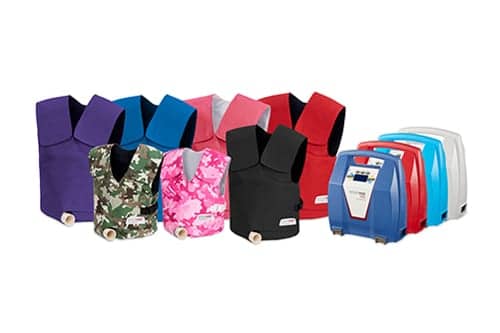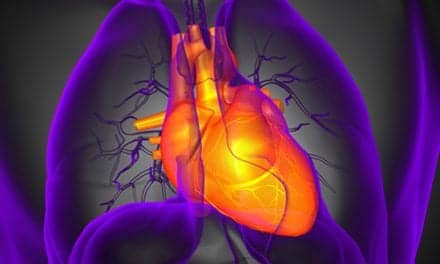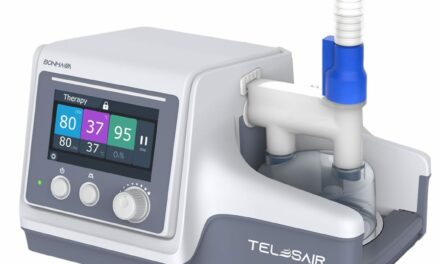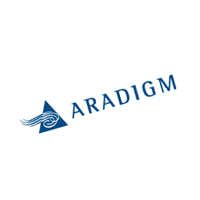There are several therapeutic techniques to remove secretions from the lungs and airways of chronic lung patients. But with all the options, how does a respiratory therapist decide which is the most effective for the patient?
By Phyllis Hanlon
The issue of secretion clearance can be a matter of life and death for those who have cystic fibrosis, chronic obstructive pulmonary disease (COPD), asthma, and other respiratory-related illnesses. Researchers and manufacturers continue to develop therapeutic techniques and devices that help remove secretions from the airways and lungs of patients with chronic lung disease. With all the options, how does a respiratory therapist decide which would be the most effective for his patient? This article examines the various types of clearance techniques and devices and how they can benefit patients with respiratory illnesses.
Identify the Root Cause
Before identifying the best possible treatment option, clinicians must first determine the underlying cause of excessive secretions, according to Eduardo Mireles-Cabodevila, MD, program director for the Critical Care Medicine Fellowship at the Cleveland Clinic. He cited three basic factors related to airway clearance: the need to cough, structural problems, and secretion composition.
Mireles-Cabodevila explained that isolating whether a cough is reflexive or volitional indicates how much air is getting into the lungs and how fast it is being pushed out. For patients too weak to breathe deeply or whose vocal chords are not functioning properly, he recommended breath stacking with an ambu bag to help push more air into the lungs. He might also prescribe an abdominal binder to make the muscles stronger or cough assist through mechanical insufflation.
Secretions due to structural problems, (ie with the mucociliary tree), may be more difficult to address. “You have to assess the wall integrity,” Mireles-Cabodevila said. “For example, is there bronchiectasis or a tumor?” Patients with cystic fibrosis are prime candidates for excessive amounts of secretions; they may have a “floppy” airway that requires postural or altogenic drainage or instruction on forced expiratory coughing. “You need to increase the pressure to keep the airway open,” he said.
Focused Pulse Technology
Three decades ago chest physical therapy with postural drainage was the only method available to clear airways in patients with a range of respiratory diseases, according to Barrett Mitchell, president, RespInnovation SAS. “Without this treatment, the bronchial obstructions would become infected, pass to pneumonia and, left untreated, could cause eventual loss of pulmonary vital capacity,” he said. Thirty years ago, high frequency chest compression devices required 30-minute sessions two or three times a day.
“This is a very physically demanding form of therapy for the patients as it transfers a great deal of energy to the patient’s entire thorax using a high content background pressure, then repeatedly squeezing the thorax up to 20 times per second to create air movement in the airways to dislodge secretions.” While this method can be effective, only a limited number of patients can tolerate the process.
RespInnovation used modern technology to create a “focused pulse” high frequency chest wall oscillation (HFCWO) device, resulting in a more comfortable, flexible, effective therapy delivery system. Mitchell explained that the focused pulse technology incorporates “a system of proprietary valves, pressure pistons and electronic control that delivers therapeutic pulsations directly to targeted areas of the patient’s thorax.” Focused pulsation begins with the “premise of treating specific zones of the thorax by transferring focused pulsation of energy to the ribcage,” he noted. “Because every patient is an individual, and according to the mucus viscosity/patient physiology, the treatment needs to be as customizable as possible.”
“Focused pulse transfers only 10% of the energy to the patient that HFCWO devices do. This means the patient only needs to be able to tolerate one-tenth of the energy that existing devices on the market today deliver,” Mitchell said. He pointed out that the Respin 11 can be used, on average, twice a day for 20 minutes each session, but has been tested up to 40-minute sessions with no adverse effects.
High Frequency Chest Wall Oscillation
The SmartVest SQL Airway Clearance System from Electromed uses HFCWO technology to deliver a rapidly repeating pulse of air, alternately squeezing and releasing the upper body. Each squeeze simulates a “mini cough,” which acts to loosen the mucus from the walls of the airways then propel it to the larger airways where it can be coughed out. The SmartVest is designed to acclimate the patient to its use.
“We have designed our system to maximize the comfort and assure that it is easy to use,” Kathleen Skarvan, CEO of Electromed, said in a recent interview with RT. “With any therapy, the key is to ensure quality of life and so we have uniquely designed our device with a single hose, which helps us accommodate a softer start and an active inflate and deflate.” Rather than beginning with an abrupt compression, the SQL slowly ramps up. This technique improves patient comfort, Skarvan added. “The soft start helps people to better acclimate to the therapy so it doesn’t give them an abrupt sharp ‘hug’ and the active inflate and deflate acclimates the patient to therapy by allowing the garment to contour to the chest cavity.”
In acute care settings, the SmartVest SQL is administered by RTs and may be used as a preventative treatment to help keep hospital patients clear of secretions and possible infections, Skarvan explained. Meanwhile, for home use, a trainer will be sent to the patient’s home to fit the device and to educate the patient, as well as to calibrate it according to the prescribing physician’s directions. The typical self-administered patient treatments consist of two 15- to 30-minute sessions per day. According to Skarvan, the device has been prescribed to patients ranging in age from newborns to senior citizens. While it has been used to treat more than 400 diseases and conditions, it is most commonly used to treat cystic fibrosis, cerebral palsy, quadriplegia conditions, ALS, COPD, and bronchiectasis.
Sound Wave Vibration
New to the market, the Vibralung Acoustical Percussor, which can be handheld or mounted on a stand, uses sound waves to create intrapulmonary vibrations that facilitate mucus removal from the respiratory tract. “Sound waves, coupled directly to the airway, vibrate the air in the tracheobronchial tract, which, in turn, vibrate the airway surfaces and/or mucus accumulations at the particular resonant frequency through the phenomenon of sympathetic resonance,” said Michael McPeck, RRT, FAARC, director of clinical education and Vibralung Clinical Specialist.
A typical treatment takes 10 minutes and can be delivered in low, medium and high frequency modes. Patients may take from two to four sessions per day. “A treatment session can consist of a single 10-minute treatment in one mode only or two modes for twenty minutes, such as low followed by medium, or medium followed by high,” said McPeck.
Since its release nine months ago, Vibralung has become a popular means of airway clearance for patients with CF and is making inroads with those who have COPD and non-CF bronchiectasis. “Our experience with cystic fibrosis patients, who are always acutely aware of their pulmonary sections, has shown that they can quickly identify which modes will work well with them, based upon their perceived location of their secretions and the response to therapy,” said McPeck. “Alternately, based upon the site (or sites) of secretion accumulation in the airways, some degree of predictive targeting may be applied, based upon the physical principles of acoustic resonance.”
McPeck added, “The fundamental Vibralung treatment is delivered without simultaneous aerosol delivery. However, if desired by the clinician, and appropriate for the patient, a special aerosol therapy device can be interfaced with the Vibralung to provide both aerosol delivery and acoustic airway clearance therapy at the same time.”
Percussive Nebulizer
Jeremy LaPlante, director of worldwide sales and marketing for Vortran Medical, credited Forrest Bird, who introduced Intermittent Positive Pressure Breathing (IPPB) in 1955, for inspiring the PercussiveNEB, a vibratory therapy device with a high output nebulizer. “Vortran engineers saw a need for a disposable version [of Bird’s device] and invented the PercussiveNEB. It runs off a single gas source and provides nebulizer medication on inhalation and percussive vibration therapy on exhalation,” he said.
The device features “hard” and “soft” settings on a threaded dial. LaPlante said, “We instruct clinicians to start in soft mode, which reaches the upper airway, throat and upper chest. If you dial in a lower frequency, you get a deeper hit into the lower alveoli and lobes.” A PercussiveNEB session typically lasts 15-20 minutes, works like a regular nebulizer treatment and can be done every four hours.
Although some patients use the PercussiveNEB at home, the device is found primarily in a hospital setting. “Patients use the same device during their whole stay. They may take it home when discharged or throw it away,” LaPlante said, noting that the shift in the medical field toward disposables prompted the company to explore a single-patient use airway clearance device.
Combination Therapy
In some cases, combination therapy may offer optimal results. For instance, cystic fibrosis patients may find relief with inhaled nebulizer treatments, such as Dornase alfa or a 7% saline solution. “If medications are not an option, you could add vibration/percussion to the chest wall/airway, which affects viscosity. This makes it easier to move secretions out of the airway,” said Mireles-Cabodevila. “If the patient doesn’t tolerate this, you could use a device to oscillate the air to bring out secretions.” He added that the Flutter, Acapella, and Cornet devices provide oscillatory positive expiratory pressure that helps reduce secretions.
Although several effective techniques and devices are currently on the market, results depend upon compliance and availability, according to Mireles-Cabodevila. “Patients are required to do the treatments regularly and appropriately. There is a lot of habit-forming involved.” He suggested that breakthroughs in technology could help develop the ideal device of the future: a portable, affordable device that not only effectively clears secretions, but also provides feedback, tracks usage and issues patient reminders. RT
Phyllis Hanlon is a contributing writer to RT. For further information, contact [email protected].











good article, works for the 90+% of people who are physically capable of clearing out loosened secretions. I do home therapy(RT) on people who ,due to neuromuscular diseases, are incapable of coughing, or coughing appropriately. This is a smaller percentage of population. Some have aspiration issues. And some become ventilator dependent.
What I have not been able to find, is any discussion regarding therapeutic modalities in the treatment of this patient population.
thank you for the article.